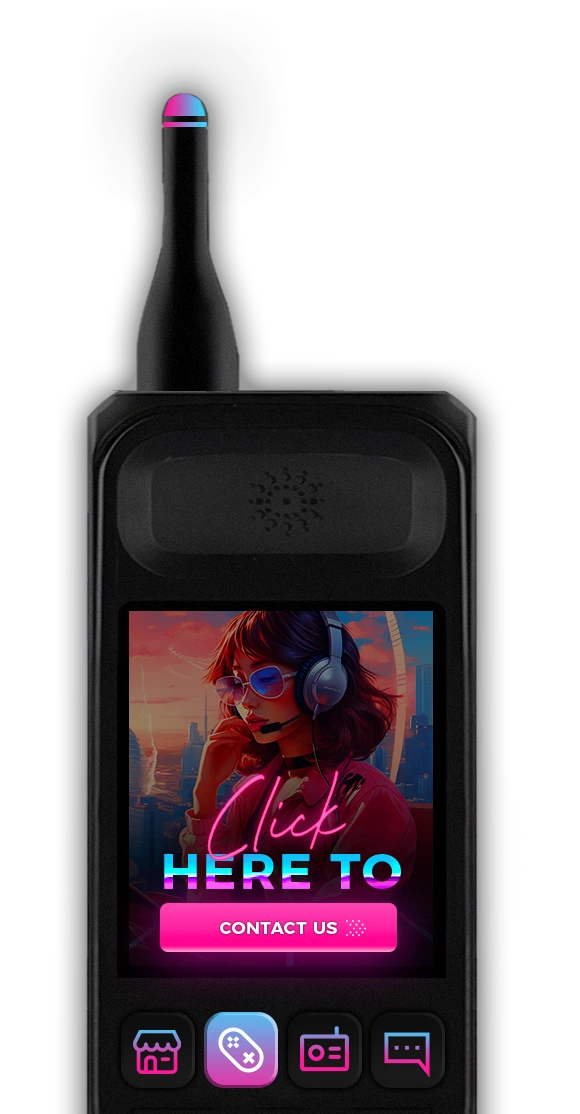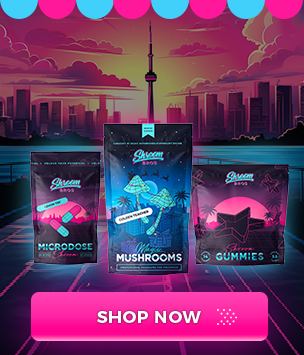With regard to hallucinogens like psilocybin—an ingredient of so-called “magic mushrooms” (e.g., Psilocybe cubensis)—it may be high time to reconsider long-standing hypotheses related to their actions in the human brain.
Although psilocin (the active metabolite of psilocybin)and other classical hallucinogens like lysergic acid diethylamide (LSD) have complex pharmacology with high affinities for multiple neurotransmitter receptors, it has long been appreciated that their psychedelic actions correlate best with 5-HT2A–serotonin receptor agonism. Indeed, in 5-HT2A knockout mice, classical hallucinogens are devoid of activity. Importantly, the psychedelic actions of psilocybin in humans are abolished by pretreatment with relatively selective 5-HT2A antagonists. Taken together, these findings support the hypothesis that psilocybin and other classical hallucinogens exert their psychedelic actions in humans via activating 5-HT2A serotonin receptors.
Psilocybin diminishes brain activity and connectivity. (A) Psilocybin, which is inactive, is metabolized to the active ingredient psilocin. Psilocin then activates many neurotransmitter receptors (B) to modulate activity on excitatory pyramidal and inhibitory GABA-ergic neurons (C). (B) Affinity values for psilocin are expressed as –log in nanomoles (pKi) and are from the National Institute of Mental Health Psychoactive Drug Screening Programs Ki Database. (C) Psilocin interacts with various receptors on large excitatory pyramidal neurons and smaller inhibitory neurons. Psilocin may interact with excitatory (orange) or inhibitory (red) receptors to augment or inhibit neurotransmission. Psilocin’s net effect is a decrease in neuronal activity and connectivity as measured by fMRI.
Although there is consensus regarding the pharmacological actions of classical hallucinogens, the neuronal mechanisms responsible for the psychedelic actions of hallucinogens remain controversial. Thus, some investigators have observed that LSD-like hallucinogens can enhance pyramidal neuron activity by activating 5-HT2A serotonin receptor signaling. These findings that hallucinogens activate glutamatergic neurotransmission are consistent with many other studies demonstrating that 5-HT2A receptors were enriched on Layer V glutamatergic neurons although we and others have noted that 5-HT2A receptors are also found on GABA-ergic interneurons. Indeed, 5-HT2A agonists can also augment inhibitory neuronal activity. Taken together, these previous findings have implied that the actions of hallucinogens such as psilocybin might be due to a mixture of actions on both excitatory (e.g., pyramidal) and inhibitory (e.g., GABA-ergic interneuronal) neuronal circuits. Conceivably, then, hallucinogens like psilocybin could induce their psychedelic effects via augmenting either excitatory or inhibitory neuronal activity in humans. Unfortunately, because of medical, legal, human use, and societal concerns, well-controlled studies of hallucinogen actions in humans have languished since the early 1960s.
In PNAS, Carhart-Harris et al. successfully execute an important study that begins to fill in our gaps regarding hallucinogen actions in humans. Surprisingly, they demonstrate that psilocybin decreases surrogate markers for neuronal activity [cerebral blood flow and blood oxygen level-dependent (BOLD) signals] in key brain regions implicated in psychedelic drug actions. They also report that psilocybin appears to decrease brain “connectivity” as measured by pharmaco-physiological interaction.
To perform these studies, Carhart-Harris et al. recruit 15 experienced hallucinogen users for arterial spin labeling (ASL) perfusion and BOLD fMRI studies. The individuals were scanned before and after receiving i.v. doses of placebo or psilocybin (2 mg). Individuals were also rated for the subjective effects of psilocybin or placebo. Not surprisingly, psilocybin exerted a robust psychedelic effect with individuals reporting alterations in consciousness, time perception, and visual perceptions within minutes of psilocybin administration.
Coincident with these profound perceptual alterations, decreases in cerebral blood flow were observed in key brain regions long implicated in psychedelic drug actions—the anterior and posterior cingulate cortices and thalamus. Intriguingly, the intensity of the psychedelic experience significantly correlated with decrements in blood flow in the thalamus and anterior cingulate cortex. Carhart-Harris et al. also report what they refer to as decreases in “functional connectivity” between the ventral medial
Psilocybin appears to decrease brain “connectivity” as measured by pharmaco-physiological interaction.
prefrontal cortex and other regions that they interpret to indicate overall diminished connectivity.
Overall, these findings are consistent with the hypothesis that psilocybin diminishes activity in key brain regions and networks implicated in hallucinogen actions. These provocative findings are important because they challenge many long-held models regarding hallucinogen actions that have focused mainly on their ability to enhance excitatory neurotransmission and overall brain activity.
The findings of Carhart-Harris et al. are also important because they provide nice proof that, provided appropriate safeguards are in place, psychedelic drug actions can once again be rigorously deconstructed in normal human volunteers. Psychedelic drugs are unique in their abilities to profoundly alter human awareness and perception, and these studies provide important hints regarding the neuronal substrates of human consciousness.
HOW DO MAGIC MUSHROOMS AFFECT THE BRAIN?
This study is based on brain images taken from nine participants who were either injected with psilocybin or a placebo. The scientists used those images to create a “whole-brain connectome” which provides a picture of all the physical neurons in the brain, as well as the activity of the neurotransmitters that are being shuttled back and forth.
During your average day in the human brain, neurons are constantly firing and neurotransmitters are traveling well-trodden paths through the brain, somewhat like cars on a freeway. On magic mushrooms, those networks are “destabilized”, Kringlebach explains.
Previous research has shown that new networks appear in tandem. It’s as if those cars on the freeway were given free rein to stray from the highway and take back roads towards new destinations.
Scientists are beginning to understand how this works. For instance, psilocybin (as well as psychedelics like DMT) mimic serotonin, a neurotransmitter related to feelings of happiness or love. Kringelbach suggests that these mushrooms do more than simply affect serotonin flow in the brain.
“We wanted to investigate the role of neurotransmission in dynamically changing the activity in whole-brain networks — and how this changes neurotransmitter release in return,” he explains.
The models showed that the brain is able to tap into new networks by coupling the effects of neuron activity and the release of neurotransmitters, like serotonin. The release of neurotransmitters and the firing of neurons work together – and when you have one without the other, the whole system falls apart.
When the scientists adjusted their model to have these processes work independently, they found that they weren’t able to recreate the same “destabilization” of networks that you would usually see when someone is on magic mushrooms. The same breakdown in their pattern happened when they replaced the typical serotonin receptors utilized by magic mushrooms (5-HT2A receptors) with other types of serotonin receptors.
Taken together, this suggests that both the receptors themselves, and the patterns of neuron activity are necessary for psilocybin to really work.
THE FUTURE OF MAGIC MUSHROOMS
Knowing that both receptors and neuron activity are needed, says Kringlebach, could help better understand how to use the drug as a therapy. In turn, these models can help us visualize an enduring mystery within the human brain, says Kringlebach.
“It has long been a puzzle how the brain’s fixed anatomical connectome can give rise to so many radically different brain states; from normal wakefulness to deep sleep and altered psychedelic states,” he says.
We only have a fixed amount of hardware in the brain, yet we’re running highly complicated software that produces dreams, consciousness, and — if someone is on a drug like DMT — “breakthrough experiences.”
If the magic mushrooms demonstrate anything, it’s that the brain can learn to use its fixed hardware in very different ways, if the right ingredients are involved. The trick is figuring out what tools the brain needs to run different types of software on that hardware.
In the future, the team hopes that their model could help us learn how we can run different types of software in our brains, and in doing so, help treat conditions like depression.
“This new model will give us the much needed, causal tools for potentially designing new interventions to alleviate human suffering in neuropsychiatric disorders,” Kringlebach says.
Recent therapeutic trials of “classical” psychedelic drugs, such as psilocybin (from magic mushrooms) or LSD, have reported benefits to wellbeing, depression and anxiety. These effects seem to be linked to a sense of “ego dissolution” — a dissolving of the subjective boundaries between the self and the wider world. However, the neurochemistry behind this effect has been unclear. Now a new paper, published in Neuropsychopharmacology, suggests that changes in brain levels of the neurotransmitter glutamate are key to understanding reports of ego dissolution — and perhaps the therapeutic effects of psychedelics.
Natasha Mason at Maastricht University, the Netherlands, and colleagues recruited 60 participants for their study. All had taken a psychedelic drug before, but not in the three months prior to the study. Half received a placebo and the other half were given a low to moderate dose of psilocybin (0.17 mg/kg of body weight).
The team then used a technique called proton magnetic resonance spectroscopy (MRS) to look at concentrations of glutamate (as well as other neurochemicals) in the medial prefrontal cortex (mPFC) and the hippocampus — two regions that have been implicated as key to the psychedelic drug experience. The team also looked at patterns of “functional connectivity” within networks of brain regions, a measure of how closely correlated brain activity is across those regions. Six hours after taking the drug or placebo, the participants reported on their subjective experiences using two surveys: The 5 Dimensions of Altered States of Consciousness and the Ego Dissolution Inventory.
As the researchers expected (based on the findings of earlier research), those given the drug reported increased feelings of ego dissolution, as well as altered states of consciousness. They also showed disruptions in the connectivity of particular networks, including the default mode network, which has also been implicated in past work on the effects of psychedelic drugs..
But, for the first time in humans, the team also observed higher levels of glutamate in the mPFC and lower levels in the hippocampus after taking psilocybin — and they linked these changes to different aspects of ego dissolution. Increases in the mPFC were most strongly linked to unpleasant aspects, such as a loss of control over thoughts and decision-making, and also anxiety. Decreases in the hippocampus, meanwhile, were most strongly linked to more positive aspects, such as feelings of unity with the wider world, and of having undergone a spiritual-type experience.
The hippocampus is our most important memory structure. Based on earlier work on the impacts of psychedelic drugs on patterns of brain connectivity, it’s been suggested that a temporary reduction or loss of access to memories about our own lives might contribute to a weakening of the “self”. The new work suggests that changes in glutamate levels in the hippocampus might be key to this process.
But if glutamate rises in the mPFC are linked to unpleasant aspects of ego dissolution, and also to anxiety, how does this fit in with trial results finding that psychedelic drugs can treat anxiety disorders?
It’s not entirely clear. Psychedelics are known to bind with one particular type of serotonin receptor, called 5-HT2A receptors. This then causes immediate changes in the glutamate system, which could be responsible for producing short-term feelings of anxiety. But it might be that longer-term reduction in anxiety levels is related more to 5-HT2A receptor activation itself, rather than glutamate, the researchers suggest.
It’s also been suggested that activation of glutamate networks (via the 5-HT2A receptor) increases levels of Brain-Derived Neurotrophic Factor, which promotes the health and growth of new brain cells. Animal work provides evidence that psychedelic drugs indeed promote plasticity in the brain. And people with major depression and stress disorders have been found to have reduced plasticity. The new data provide indirect evidence that psychedelics might increase neuroplasticity in the human cortex by increasing glutamate, the researchers write. If correct, this could help with understanding how psychedelic drugs can treat depression.
More work is clearly needed to fully understand all these processes. But there’s a lot of interest in the potential therapeutic benefits of psychedelic drugs right now, and the new study does help to clarify the underlying neurobiology of the psychedelic state. As the researchers write, the findings “provide a neurochemical basis for how these substances affect individuals’ sense of self, and may be giving rise to therapeutic effects witnessed in ongoing clinical trials.”












